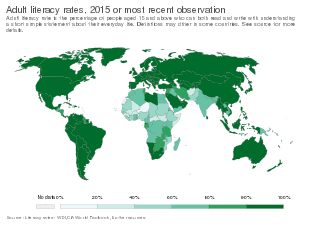
Literacy is the ability to read and write with the purpose of understanding or expressing thoughts or ideas in written form.

Nigeria is the most populous country in Africa and the sixth in the world. It is also one of the most densely populated countries in Africa, with approximately 218.5 million people in an area of 923,768 km2 (356,669 sq mi).
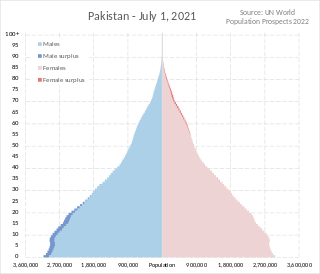
Pakistan had a population of 241,492,197 according to the final results of the 2023 Census. This figure includes Pakistan's four provinces e.g. Punjab, Sindh, KPK, Balochistan and Islamabad Capital Territory. AJK and Gilgit-Baltistan's census data is yet to be approved by CCI Council of Pakistan. Pakistan is the world's fifth most populous country.
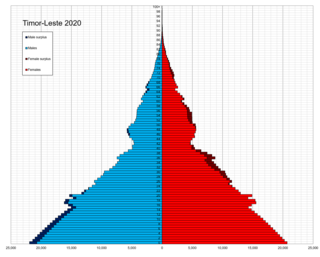
This is a demography of the population of East Timor including population density, ethnicity, education level, health of the populace, economic status, religious affiliations and other aspects of the population.

The Kerala model refers to the practices adopted by the Indian state of Kerala to further human development. It is characterised by results showing strong social indicators when compared to the rest of the country such as high literacy and life expectancy rates, highly improved access to healthcare, and low infant mortality and birth rates. Despite having a lower per capita income, the state is sometimes compared to developed countries. These achievements along with the factors responsible for such achievements have been considered characteristic results of the Kerala model. Academic literature discusses the primary factors underlying the success of the Kerala model as its decentralization efforts, the political mobilization of the poor, and the active involvement of civil society organizations in the planning and implementation of development policies.

Lindi Region is one of Tanzania's 31 administrative regions. The region covers an area of 66,040 km2 (25,500 sq mi). The region is comparable in size to the combined land area of the nation state of Sri Lanka. The regional capital is the municipality of Lindi.

Tanzania faces generalized HIV epidemic which means it affects all sections of the society but also concentrated epidemic among certain population groups. The prevalence of HIV/AIDS in Tanzania is characterised by substantial across age, gender, geographical location and socioeconomic status implying difference in the risk of transmission of infection. In 2019, among 1.7 million people living with HIV/AIDS, the prevalence was 4.6% and 58,000 new HIV infection among 15–49 years old, and 6,500 new infections among children below 15 years old, 50% of all new infections are between 15 - 29 years of age group. Report from Tanzania PHIA of 2016/17 shows that HIV prevalence among women is higher (6.2%) than men (3.1%). The prevalence of HIV is less than 2% among 15-19 years for both males and females and then increases with age for both sexes.
The Multiple Indicator Cluster Surveys (MICS) are household surveys implemented by countries under the programme developed by the United Nations Children's Fund to provide internationally comparable, statistically rigorous data on the situation of children and women. The first round of surveys (MICS1) was carried out in over 60 countries in mainly 1995 and 1996 in response to the World Summit for Children and measurement of the mid-decade progress. A second round (MICS2) in 2000 increased the depth of the survey, allowing monitoring of a larger number of globally agreed indicators. A third round (MICS3) started in 2006 and aimed at producing data measuring progress also toward the Millennium Development Goals (MDGs), A World Fit for Children, and other major relevant international commitments. The fourth round, launched in 2009, aimed at most data collection conducted in 2010, but in reality most MICS4s were implemented in 2011 and even into 2012 and 2013. This represented a scale-up of frequency of MICS from UNICEF, now offering the survey programme on a three-year cycle. The fifth round, launched in 2012, was aimed at offering countries the tools to do the final MDG data collection.

The educational attainment of the U.S. population refers to the highest level of education completed. The educational attainment of the U.S. population is similar to that of many other industrialized countries with the vast majority of the population having completed secondary education and a rising number of college graduates that outnumber high school dropouts. As a whole, the population of the United States is spending more years in formal educational programs. As with income, levels differ by race, age, household configuration, and geography.

Literacy in India is a key for social-economic progress. The 2011 census, indicated a 2001–2011 literacy growth of 97.2%, which is slower than the growth seen during the previous decade. An old analytical 1990 study estimated that it would take until 2060 for India to achieve universal literacy at then-current rate of progress.
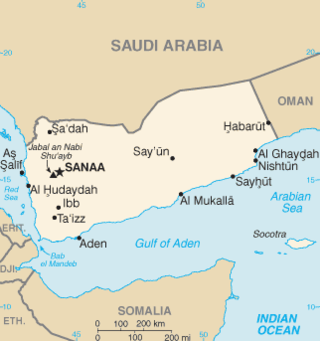
Yemen ranked 150 out of 177 in the 2006 Human Development Index and 121 out of 140 countries in the Gender Development Index (2006). In 2005, 81 percent of Yemen's school-age population was enrolled in primary school; enrollment of the female population was 74 percent. Then in 2005, about 46 percent of the school-age population was enrolled in secondary school, including only 30 percent of eligible females. The country is still struggling to provide the requisite infrastructure. School facilities and educational materials are of poor quality, classrooms are too few in number, and the teaching faculty is inadequate.
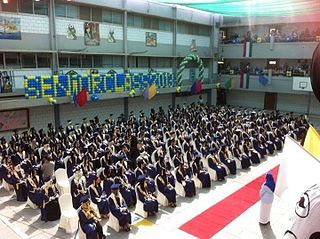
The State of Kuwait, located at the head of the Persian Gulf, supports an educational policy that seeks to provide an opportunity to all children, irrespective of their social class, including children with special needs. Kuwait was ranked 63rd on the Human Development Index report for 2011 by the United Nations Development Programme, placing Kuwait above the regional average.
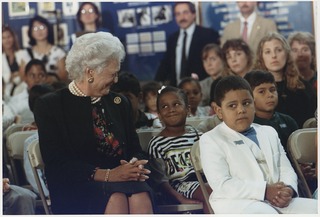
Literacy in the United States was categorized by the National Center for Education Statistics into different literacy levels, with 92% of American adults having at least "Level 1" literacy in 2014. Nationally, over 20% of adult Americans have a literacy proficiency at or below Level 1. Adults in this range have difficulty using or understanding print materials. Those on the higher end of this category can perform simple tasks based on the information they read, but adults below Level 1 may only understand very basic vocabulary or be functionally illiterate. According to a 2020 report by Gallup based on data from the U.S. Department of Education, 54% of adults in the United States lack English literacy proficiency.
Education in Uruguay is compulsory for a total of fourteen years, beginning at the preschool level, and is free from the pre-primary through the university level. In 1996, the gross primary enrollment rate was 111.7 percent, and the net primary enrollment rate was 92.9 percent. Primary school attendance rates were unavailable for Uruguay as of 2001.

An Education index is a component of the Human Development Index published every year by the United Nations Development Programme. Alongside the Economical indicators and Life Expectancy Index, it helps measure the educational attainment. GNI (PPP) per capita and life expectancy are also used with the education index to get the HDI of each country.
Nigeria had one of the world's highest economic growth rates, averaging 7.4% according to the Nigeria economic report that was released in July 2019 by the World Bank. Following the oil price collapse in 2014–2016, combined with negative production shocks, the gross domestic product (GDP) growth rate dropped to 2.7% in 2015. In 2016 during its first recession in 25 years, the economy contracted by 1.6%. Nationally, 43 percent of Nigerians live below the poverty line, while another 25 percent are vulnerable. For a country with massive wealth and a huge population to support commerce, a well-developed economy, and plenty of natural resources such as oil, the level of poverty remains unacceptable. However, poverty may have been overestimated due to the lack of information on the extremely huge informal sector of the economy, estimated at around 60% more, of the current GDP figures. As of 2018, the population growth rate is higher than the economic growth rate, leading to a slow rise in poverty. According to a 2018 report by the World Bank, almost half the population is living below the international poverty line, and unemployment peaked at 23.1%.

Females in Nigeria have a basic human right to be educated, and this right has been recognized since the year 1948 adoption of the Universal Declaration on Human Rights (UDHR) According to a report in 2014, female education has an important impact on the development of a stable, prosperous and healthy nation state resulting in active, productive and empowered citizens. Educating girls develop growth rates, encourages independence of the girl child and reduces social disparities. In 2009, the Nigerian Population Council (NPC) observed that women with higher educational qualifications are more likely to be in formal wage employment than those at the level of primary school education.
North 24 Parganas district with 24.22% Muslims has been identified as a minority concentrated district by the Ministry of Minority Affairs, Government of India. 11 districts in West Bengal has been identified as minority concentrated districts, all in Muslim minority category: Murshidabad, Malda, Uttar Dinajpur, Dakshin Dinajpur, Birbhum, Nadia, Bardhaman, Howrah, North 24 Parganas, South 24 Parganas and Cooch Behar. After these districts were identified Bardhaman district has been bifurcated into Purba Bardhaman district and Paschim Bardhaman district.
Female genital mutilation (FGM) is highly prevalent in Sudan. According to a 2014 Multiple Indicator Cluster Survey (MICS), 86.6 percent of women aged 15–49 in Sudan reported living with FGM, and said that 31.5 percent of their daughters had been cut. The most common FGM procedure in that country is Type III (infibulation); the 2014 survey found that 77 percent of respondents had experienced Type III.

Sustainable Development Goal 4 is about quality education and is among the 17 Sustainable Development Goals established by the United Nations in September 2015. The full title of SDG 4 is "Ensure inclusive and equitable quality education and promote lifelong learning opportunities for all".














